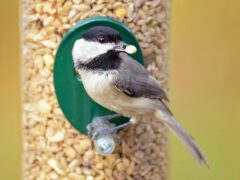Short-billed Dowitcher Photo Gallery
Breeding adult
Medium-sized shorebird with a long, football-shaped body and a long straight bill. Breeding birds have variable amounts of cinnamon coloring on their bodies. Feeds with a vertical, sewing-machine-like movement of the head.
© Dorian Anderson / Macaulay LibraryAlabama, April 21, 2019Nonbreeding adult
Short-necked shorebird with a long bill. When foraging, looks flat-backed. Nonbreeding birds are brownish gray with barring on the flanks.
© Denny Swaby / Macaulay LibraryFlorida, November 07, 2020Breeding adult
Forages by plunging its long bill deep into mud or sand, making a sewing-machine-like motion with its head. When it does this, the back usually appears fairly flat.
© Benjamin Clock / Macaulay LibraryNew Jersey, May 13, 2012Not all videos have soundJuvenile
Juveniles have more extensive cinnamon color on the folded wings above the tail. Juveniles molt out of juvenile plumage on the wintering grounds, unlike Long-billed Dowitchers that molt on the breeding grounds.
© Denis Doucet / Macaulay LibraryNew Brunswick, August 14, 2010Nonbreeding/immature
In flight, white upper rump patch distinguishes it from many other shorebirds, except Long-billed Dowitchers.
© Dorian Anderson / Macaulay LibraryCalifornia, September 23, 2018Breeding adult
Plumage color is geographically variable. Those migrating through eastern and central North America (hendersoni) have darker and more extensive cinnamon underparts.
© Cameron Eckert / Macaulay LibraryYukon Territory, May 21, 2013Breeding adult
Plumage color is geographically variable. Those migrating through eastern North American (griseus) have pale orangish breasts and whitish bellies.
© Jay McGowan / Macaulay LibraryNew York, May 25, 2017Nonbreeding adult/immature
Congregates in groups with other dowitchers during migration and winter.
© Jan Cubilla / Macaulay LibraryPanamá, March 11, 2017Breeding adult
Found in saltmarshes, lagoons, flooded agricultural fields, and coastal mudflats during migration and on the wintering grounds.
© Jay McGowan / Macaulay LibraryNew York, May 16, 2015Compare with Similar Species
Click on an image to compare
Species in This Family
Sandpipers and Allies(Order: Charadriiformes, Family: Scolopacidae)
More to Read
Don't miss a thing! Join our email list
The Cornell Lab will send you updates about birds,
birding, and opportunities to help bird conservation.










































